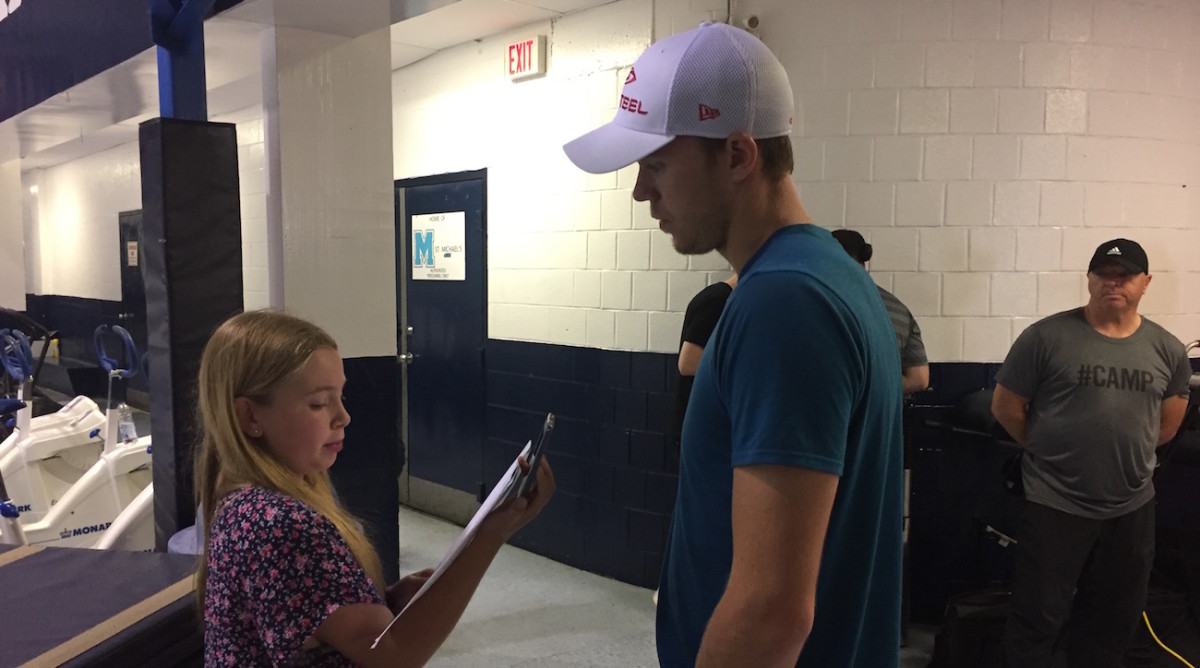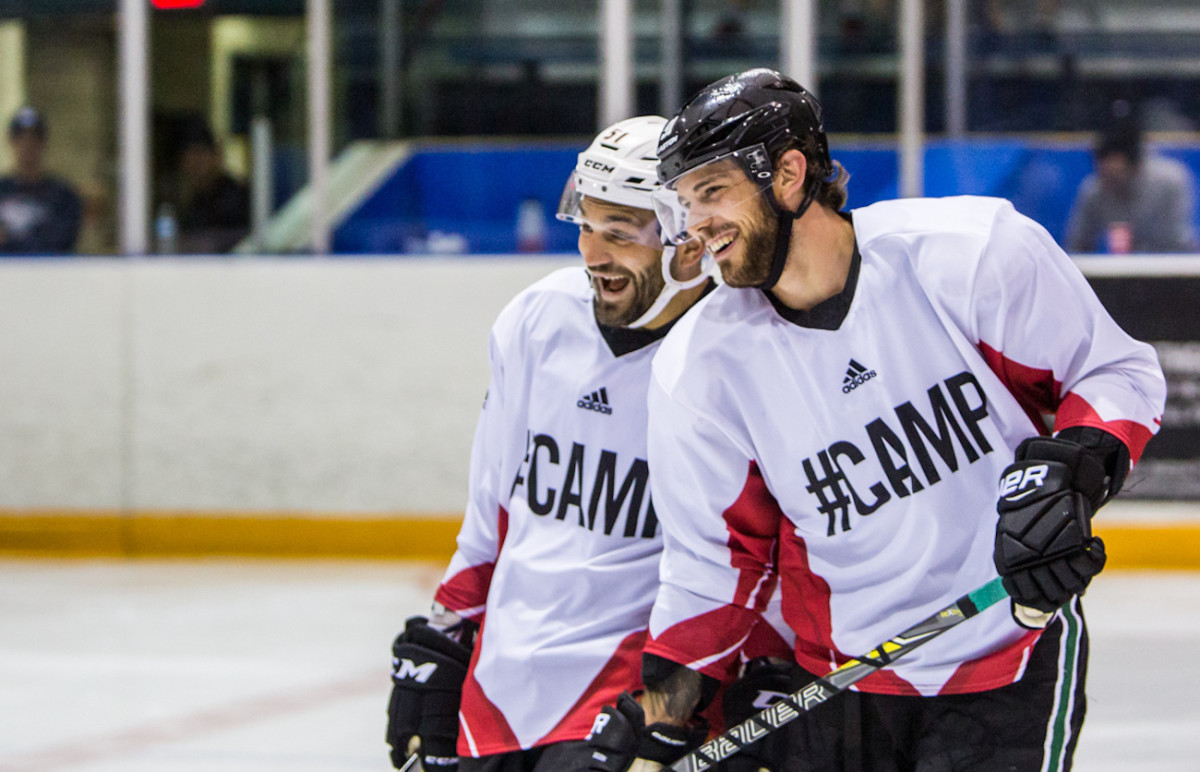Summer Memories: NHL Stars Went to Camp Too

For a lot of youth hockey players, the end of summer means going to camp. Especially in Canada, players hit the ice again working to get in “hockey” shape, breaking in new equipment and getting ready for the season that kicks off in early September. NHLers are no different!
From August 21 to 24 at St. Michael’s College School in York, Ontario, the Biosteel sports drink company hosted its annual “#CAMP,” a weeklong on- and off-ice training camp for prospects and established NHLers to work with coaches, trainers, sports therapists, and chiropractors.
While professional hockey players do train through most of the summer, this is a highly competitive and intensive camp to get them ready for their NHL training camps, which begin in mid-September. Stars such as Connor McDavid (Edmonton Oilers) and Tyler Seguin (Dallas Stars) shared the ice and competed with prospects like Jordan Subban (Vancouver Canucks) and Jake Walman (St. Louis Blues), all with the goal of standing out at their own teams’ training camps.
Most kids who have gone to hockey camps in the summer have a ton of fun at them. They’re designed to be competitive but also enjoyable—it is summer! So how do NHLers, whose job is to play hockey, view these camps? Do they consider it fun or work?
“It’s a bit of both I think. When hockey players play hockey as a job it’s something that they love to do,” Walman said.
Subban agrees. “You know, it’s always fun every time I go on the ice. I’m having fun but at same time I realize it’s a job for me.”
An established star like McDavid, who has been going to camps all his life, unsurprisingly loves everything about this type of summer training. “Camps like this are always fun whether you’re in the NHL or just coming up. It’s always fun being with the guys and competing.”

Watching the camp, it’s clear that it’s a high-intensity atmosphere. Everything the players do seems like a competition. So what makes it fun for them?
“Mostly being with the guys,” Walman said.
“Scoring goals and winning,” Subban said with a laugh.
There’s no doubt hockey players share a strong bond with each other, but also there’s no question they want to beat each other in every drill and every game. Their competitiveness is certainly why they have gotten this far in their hockey careers.
Each of these players went to summer hockey camps growing up. So to what extent does a camp like this remind them of their experiences as kids?
“It’s pretty similar!” Walman said. “I was actually on the ice thinking about that—this is what the younger kids do also. It made me feel like I am almost 10 years old again.”
Said Subban, “You know, coming out here with a lot of my friends and having fun, it’s just like back in the day when we’d go to camp.”
“I think just kind of coming in and meeting new people,” McDavid said. “You’d always meet new people at camp.”

The NHL season is long and physically demanding, so healing and rest in the summer is important. Most players seem to take two to three weeks off right after the season, generally going on a vacation. But gone are the days when the whole summer was a vacation.
“You know you’ve got to rest, but nowadays everybody is working hard, so you’ve got to know when to rest and when to get to work,” Subban said.
There wasn’t a player at the Biosteel camp who was there to get into shape. They’d been training for weeks and arrived in peak physical condition, looking to compete as if they were at their actual training camps.
Training in the summer both on and off the ice is extremely important to these players. “It’s huge! Every year you want to get bigger and stronger than the guys you are playing against,” Walman said.
Explained McDavid, “It’s so important! It’s something I take very seriously and have for a long time now. The more you train off the ice, the better you’ll be on it.” No doubt this is a big reason why he is considered one of the best and most agile skaters in the NHL today!
What is clear is that camps like Biosteel’s exist to test the work that players have put in throughout the summer and give them a highly competitive environment during which they can prepare for their NHL training camps. It’s somewhat different from youth hockey players who go to summer camps to begin skating again and get ready to return to the ice in September. What’s the same is that no matter whether you’re a young player, a prospect, or an established NHLer, camps are fun because you’re with your friends, competing, and doing something that you love.
Photographs courtesy of Biosteel Sports(2); Abigail Dove (interview with McDavid)
